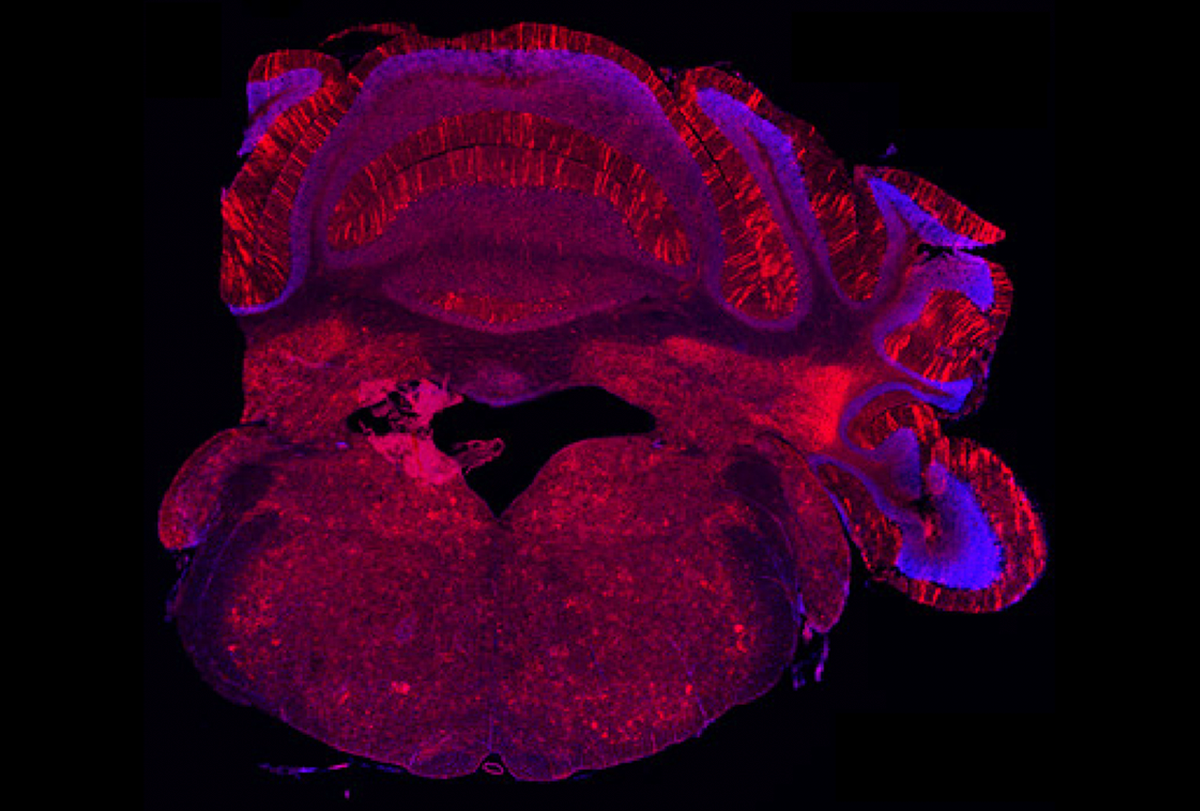An altered eye reflex may distinguish children with mutations in SCN2A, one of the genes most strongly linked to autism, according to a new preprint. Mice with a mutation in SCN2A also show the altered reflex, which became more typical after the researchers counteracted the mutation’s effects in adolescent animals. The new study investigated the vestibulo-ocular reflex, which helps people keep a steady gaze whenever their head moves, triggering eye movements in the opposite direction of the head. In neurotypical children, this reflex is sensitive to fast head movements but less so to slower ones, whereas in autistic children it tends to be sensitive to both fast and slow movements. The children wore this apparatus while turning back and forth on a swivel chair, revealing that the reflex differs between those with and without SCN2A mutations. Involuntary actions: Some neurons in the mouse cerebellum express SCN2A and help control the eye reflex. Adolescent SCN2A mice showed typical plasticity for the reflex after the scientists used a CRISPR-based approach to boost SCN2A expression. Still, testing whether adjusting the reflex “Improves other behavioral deficits in SCN2A mice is an enticing possibility that should be explored,” she says.
This summary was generated by Smmry

